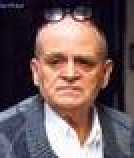Dr. C?sar Lattes (About)
(Died: March 8, 2005)
Physicist
Interests: Relativity, Particle Physics Age: 80
C?sar Lattes, co-discover of the pion, became a critic of Einsteinian relativity in the 1960s. To this day his students continue to conduct experiments in induction, which challenge Einstein's theories at their foundation.
- Lattes was born to a family of Italian Jewish immigrants in Curitiba, Southern Brazil.
- At the age of 23, he was one of the founders of the Brazilian Center of Physical Research (Centro Brasileiro de Pesquisas F?sicas) in Rio de Janeiro.
- From 1947 to 1948, Lattes launched on his main research line, by studying cosmic rays, which were discovered in 1932 by American physicist Carl David Anderson. He visited a weather station on top of the 5,200-meter high Chacaltaya mountain in Bolivia, using photographic plates to register the rays. Traveling to England with his teacher Occhialini, Lattes went to work at the H. H. Wills Laboratory of the University of Bristol, directed by Cecil Frank Powell (1903-1969). After improving on the nuclear emulsion used by Powell, by asking Ilford Co. to add more boron to it, in 1947, he made with them his great experimental discovery, that of a new atomic particle, the pi meson (or pion), which disintegrates into a new kind of particle, the mu meson. Brash young Lattes then proceeded to write a paper for Nature magazine without bothering to ask for Powell's consent. In the same year, he was responsible for calculating the new particle's mass, a painstaking job. A year later, working with Eugene Gardner (1913-1950) at the University of California, Berkeley, Lattes was able to detect the artificial production of pion particles in the lab's cyclotron, by bombarding carbon atoms with alpha particles. He was 24 years old.
- Although he was the main researcher and the first author of the historical Nature article describing the meson pi, Cecil Powell alone was awarded the Nobel Prize for Physics in 1950 for ?his development of the photographic method of studying nuclear processes and his discoveries regarding mesons made with this method?. The reason for this apparent neglect is that the Nobel Committee policy until 1960 was to give the award to the research group head, only. [See here for a similar situation in the Nobel 2007 awards].
- In 1969, he and his group discovered the mass of the so-called fire balls, a phenomenon induced by naturally occurring high-energy collisions, and which was detected by means of special lead-chamber nuclear emulsion plates invented by him, and placed at the Chacaltaya peak of the Bolivian Andes.
- His colleagues, who also became important Brazilian scientists, were Oscar Sala, M?rio Schenberg, Roberto Salmeron, Marcelo Damy de Souza Santos and Jayme Tiomno.
- Lattes is one of the most distinguished and honored Brazilian physicists, and his work was fundamental for the development of atomic physics. He was also a great scientific leader of Brazilian Physics and was one of the main personalities behind the creation of the important Brazilian National Research Council (Conselho Nacional de Desenvolvimento Cient?fico e Tecnol?gico). He figures as one of the few Brazilians in Isaac Asimov's Biographical Encyclopedia of Science and Technology, as well as in the Encyclop?dia Britannica.
Articles:
- "The Discover of the Pion", Nature 159, 186?190 & 160, 453?456 (1947).


